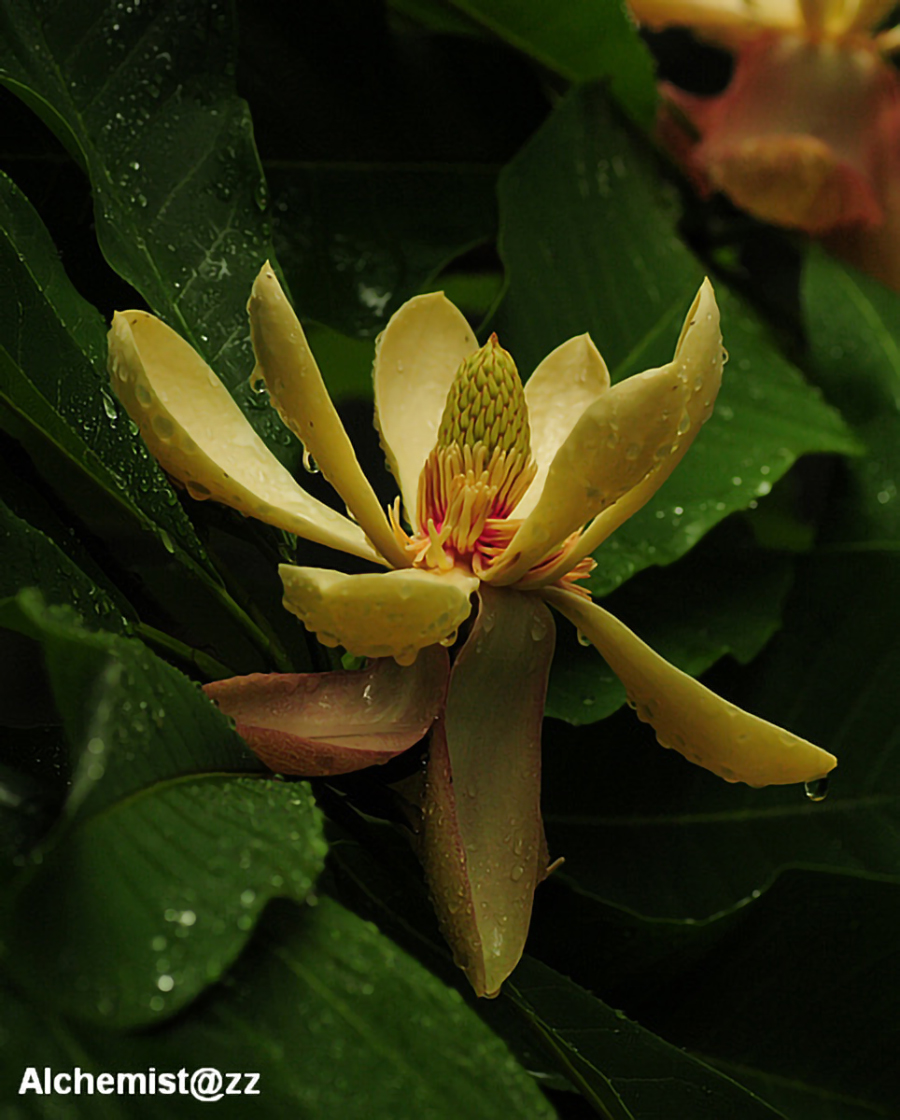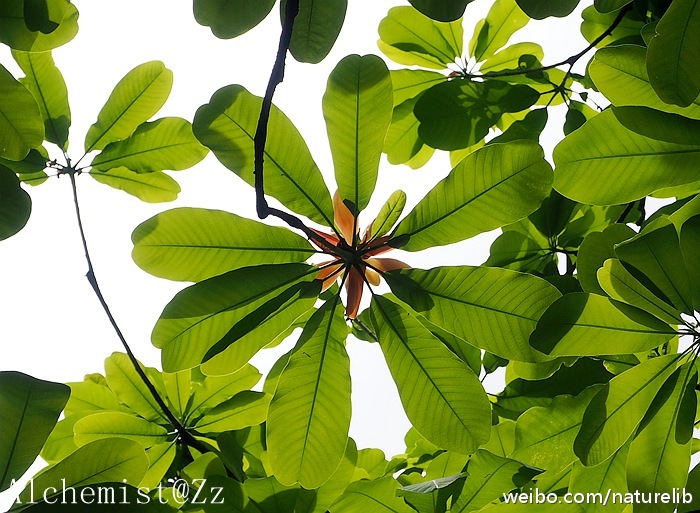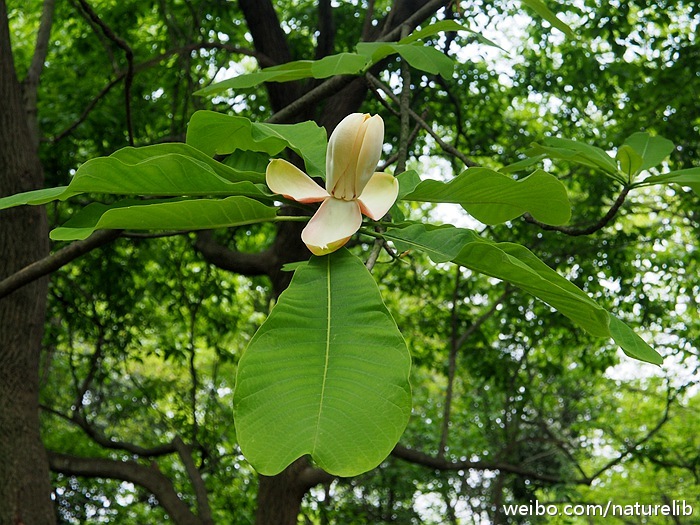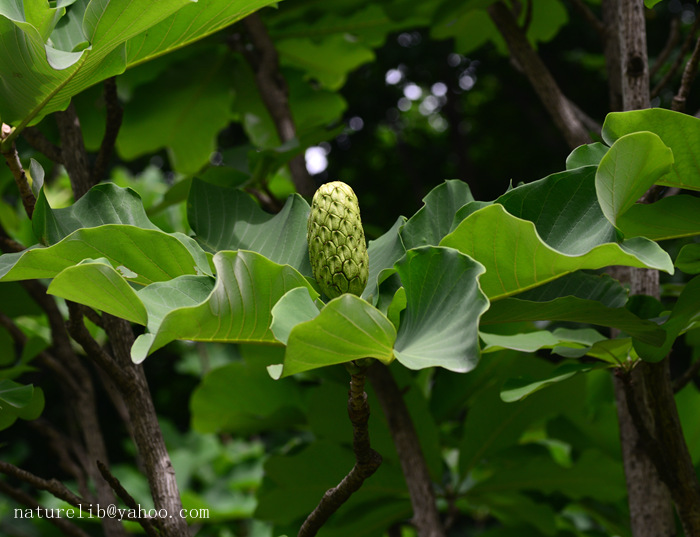厚朴 Magnolia officinalis

- Scientific Name: Magnolia officinalis Rehder & E.H.Wilson
- Ref: C.S.Sargent, Pl. Wilson. 1:391. 1913
- Synonym: Houpoëa officinalis (Rehder & E.H.Wilson) N.H.Xia & C.Y.Wu
- English Common Name: houpu magnolia, magnolia-bark
- Chinese Common Name: 厚朴 hòupò
- Japanese Common Name: シナホオノキ [シナ朴の木] shinahōnoki
- Family: Magnoliaceae
- Genus: Magnolia
- Distribution: Forests; 300-1500 m. Anhui, Fujian, SE Gansu, N Guangdong, Guangxi, NE Guizhou, SE Henan, W Hubei, NW Hunan, Jiangxi, S Shaanxi, E and S Sichuan, Zhejiang.
Trees, to 25 m tall. Bark pale gray. Vegetative buds and young twigs reddish brown curved villous. Twigs green at first then turning brown, strong and thick; axillary vegetative buds grayish green, terete, glabrous. Stipular scar significantly prominent, nearly 1/3-2/3 as long as petiole. Leaves 7-9 clustered on twig apex; petiole strong and thick, 4-7 cm, at first with trichomes; leaf blade obovate to broadly obovate, 34-50 × 21-23 cm, thickly papery, abaxially glaucous and reddish brown curved villous, adaxially green and glossy, secondary veins 28-30 on each side of midvein, base broadly cuneate to cordate, apex broadly rotund, shortly acute, or sometimes 2-cleft. Flowers appearing after leaves, 8-9 cm in diam., fragrant. Tepals 9-12; tepals of outer whorl outside green flushed slightly pink and inside pink, oblong-elliptic, 8-13 × ca. 5.6 cm, reflexed; tepals of inner 2 whorls purely white, obovate-spoon-shaped, 12-14 cm, erect, base clawed. Stamens purplish red; filaments ca. 5 mm; connective exserted and forming a triangular mucro; anthers ca. 1 cm. Gynoecium cylindric. Fruit terete, 11-20 × ca. 4 cm, erect, base broadly rounded, apex gradually narrowing; mature carpels with a 5-8 mm curved beak. Seeds ca. 7 × 5 mm, flat. Fl. May-Jul, fr. Sep-Oct. (Flora of China)

04/12/2016

04/12/2016

06/18/2016, Hangzhou, Zhejiang